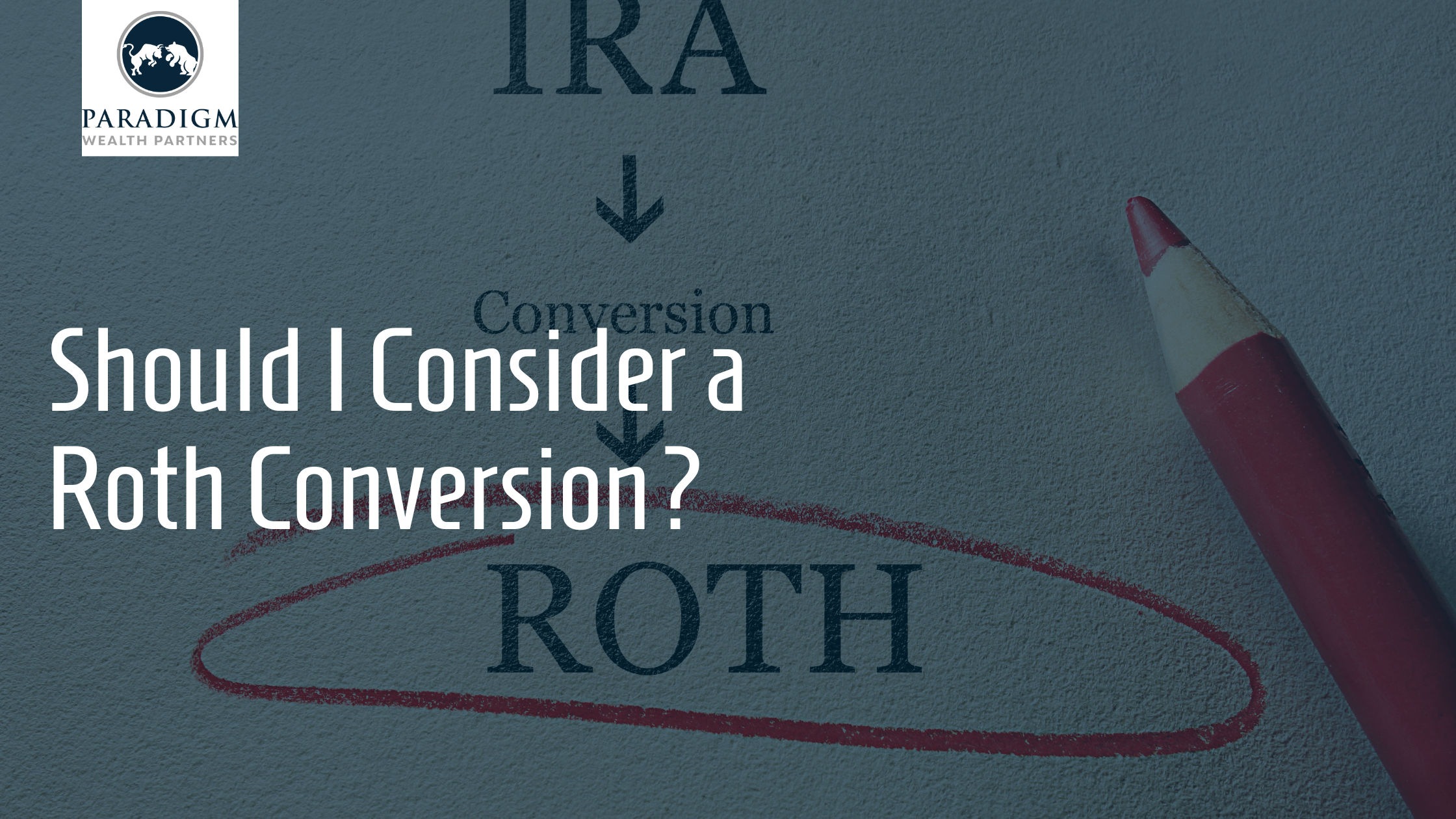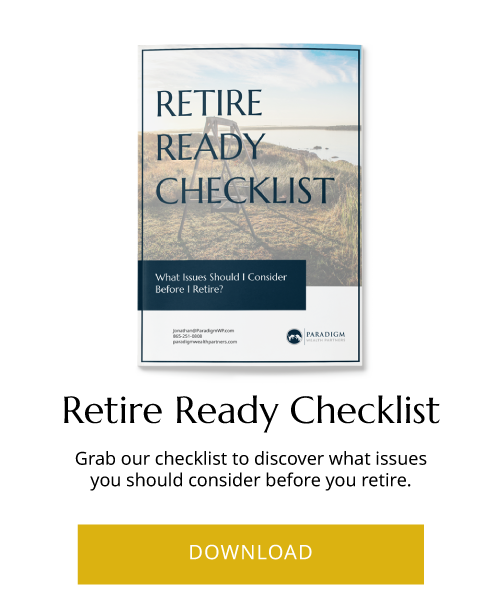Roth Conversions: What to Consider
A Traditional IRA is an important part of retirement planning. Tax planning is an important component as well. That’s where a Roth conversion can come into play.
Traditional IRA
A Traditional IRA is an individual retirement account that allows pre-tax contributions. The contributions give investors a tax break for the year the contribution was made. However, withdrawals made after retirement are subject to income tax.
There are yearly contribution limits. For 2023, the limit is $6,500, with an additional $1,000 allowed for those aged 50 and older. There are no income limits for contributing to a Traditional IRA. Required minimum distributions (RMDs) are required for Traditional IRAs beginning at age 73
Roth IRA
A Roth IRA is an individual retirement account that requires taxes to be paid on the contributions. Withdrawals during retirement are tax-free.
There are yearly contribution limits. For 2023, the limit is $6,500, with an additional $1,500 allowed for those aged 50 and older. There are income limits for contributing to a Roth IRA. For 2023, the limits are a modified adjusted gross income (MAGI) of less than $153,000 for single tax filers and less than $228,000 for those married who file jointly.
There is no RMD for a Roth IRA.
Investors can have both a Traditional and a Roth IRA, but both accounts combined are subject to the $6,500 contribution limits, $1,500 for those 50 and older.
What is a Roth Conversion?
A Roth conversion means transferring retirement assets from a Traditional IRA (or SEP, SIMPLE IRA, or 401(k)) into a Roth IRA. The account holder must pay income tax on the money converted but is then eligible to make tax-free withdrawals during retirement from the account going forward.
How to do a Roth Conversion
Doing a Roth conversion is simple. Open a Roth IRA if you don’t already have one. To make sure you don’t fall foul of IRS Roth IRA conversion rules, convert your existing account one of the below ways:
- Indirect rollover: You’ll receive the distribution from your Traditional IRA (or other accounts) and contribute it to your Roth IRA within 60 days.
- Trustee-to-trustee or direct rollover: Tell the custodian of your Traditional IRA to transfer the amount in the account directly to the trustee of your Roth IRA.
- Same trustee transfer: If both accounts are with the same custodian, tell the trustee to transfer the funds from your Traditional IRA to your Roth IRA.
What are the Benefits of a Roth Conversion?
- Tax-free withdrawals in retirement: No one knows what tax rates will look like in the future, but it’s not too far-fetched to think they will be higher than the current rates.
- No RMDs: Traditional IRAs force you to take RMDs once you are 73, regardless of whether or not you need the money, which means you lose the tax-free growth on the money you have to withdraw. Roth IRAs don’t require RMDs during your lifetime, so the money can remain in the account and continue to grow tax-free.
- Estate planning: Heirs can generally withdraw money from an inherited Roth IRA tax-free as long as they follow the IRS’s distribution rules, including the five-year rule that states the account must have been open for at least five years at the time of the original account holder’s death.
- Backdoor Roth IRA strategy: The backdoor Roth IRA strategy is a type of conversion that allows those with high incomes to fund a Roth IRA despite the IRS income limits. You put money you’ve already paid taxes on into a Traditional IRA and then convert the contributions into a Roth IRA, where the money grows tax-free.
Minimizing Taxes on a Roth Conversion
You can’t entirely avoid taxes when doing a Roth conversion, but you can minimize the taxes you’ll owe on the rollover. It’s a matter of timing when you do the conversion:
- A year during which you fall into a lower-than-normal tax rate: Maybe you took a job with a lower salary, were unemployed for a time, or didn’t earn a bonus.
- Your Traditional IRA account balance is down: A year the market hasn’t been kind to your Traditional IRA.
- Early in the tax year: Taxes aren’t due until April of the following year, so converting early in the calendar year gives you more time to pay them.
- A little at a time as you can afford the taxes: You don’t have to convert your entire balance, but you can’t convert only the portion that would be taxed, like non-deductible contributions.
Who Should Consider a Roth Conversion?
- You believe your tax bracket will be higher during retirement than your current rate. You might be in a higher bracket because tax rates have been increased, or you currently live in a state that doesn’t require income taxes. However, you may retire in a state that does.
- You don’t expect to need to make withdrawals from your account to pay for living expenses and want to maximize tax benefits for your heirs.
- Your income is lower this year, and you can minimize taxes on a conversion.
Who Should Not Consider a Roth Conversion?
- Those who won’t have the money to pay taxes on the converted amount.
- You’re planning to utilize a qualified charitable distribution (QCD). QCDs are a way to make tax-free donations to a qualified charity and have the donation count towards your annual RMD.
- You’re close to retiring and need the money in your Traditional IRA to pay for living expenses.
If you have questions about Roth conversions or any other aspect of financial planning, we’re here to help.
Contributions to a traditional IRA may be tax deductible in the contribution year, with current income tax due at withdrawal. Withdrawals before age 59 ½ may result in a 10% IRS penalty tax in addition to current income tax.
A Roth IRA offers tax deferral on any earnings in the account. Qualified withdrawals of earnings from the account are tax-free. Withdrawals of earnings prior to age 59 ½ or before the account being opened for 5 years, whichever is later, may result in a 10% IRS penalty tax. Limitations and restrictions may apply.
Traditional IRA account owners have considerations to make before performing a Roth IRA conversion. These primarily include income tax consequences on the converted amount in the year of conversion, withdrawal limitations from a Roth IRA, and income limitations for future contributions to a Roth IRA. In addition, if you are required to take a required minimum distribution (RMD) in the year you convert, you must do so before converting to a Roth IRA.
This information is not intended to be a substitute for specific individualized tax advice. We suggest that you discuss your specific tax issues with a qualified tax advisor.
Tracking# 433399



